
Table of Contents:
– Background
– Look and Feel
– Reticle
– Comparative Optical Evaluation
– Mechanical Testing
– Summary and Conclusion
-Your Pro and Con Breakdown:
Background:
Those who read my Leupold Mark 5HD 5-25×56 scope review from back in 2021 know that it is one of my most recommended scopes. The primary reason for this is the massive crossover hunting/precision rifle appeal it has over most of its competitors, owing to its unique turret locking system and remarkably light 30oz weight. This added crossover functionality costs the user very little from either the standpoint of the primarily hunting guy or the primarily precision rifle guy. In some cases, the features that make the Mark5 appeal to the hunting crowd actually benefit the precision rifle guys as well. For instance, matches that require rifles to make a weight limit have grown far more popular recently, and guess which scope option gives you the most flexibility in making that weight? Yeah, it’s the Mark5 HD, and, unsurprisingly, it is also the most popular scope today for competitors in practical long range rifle sports.
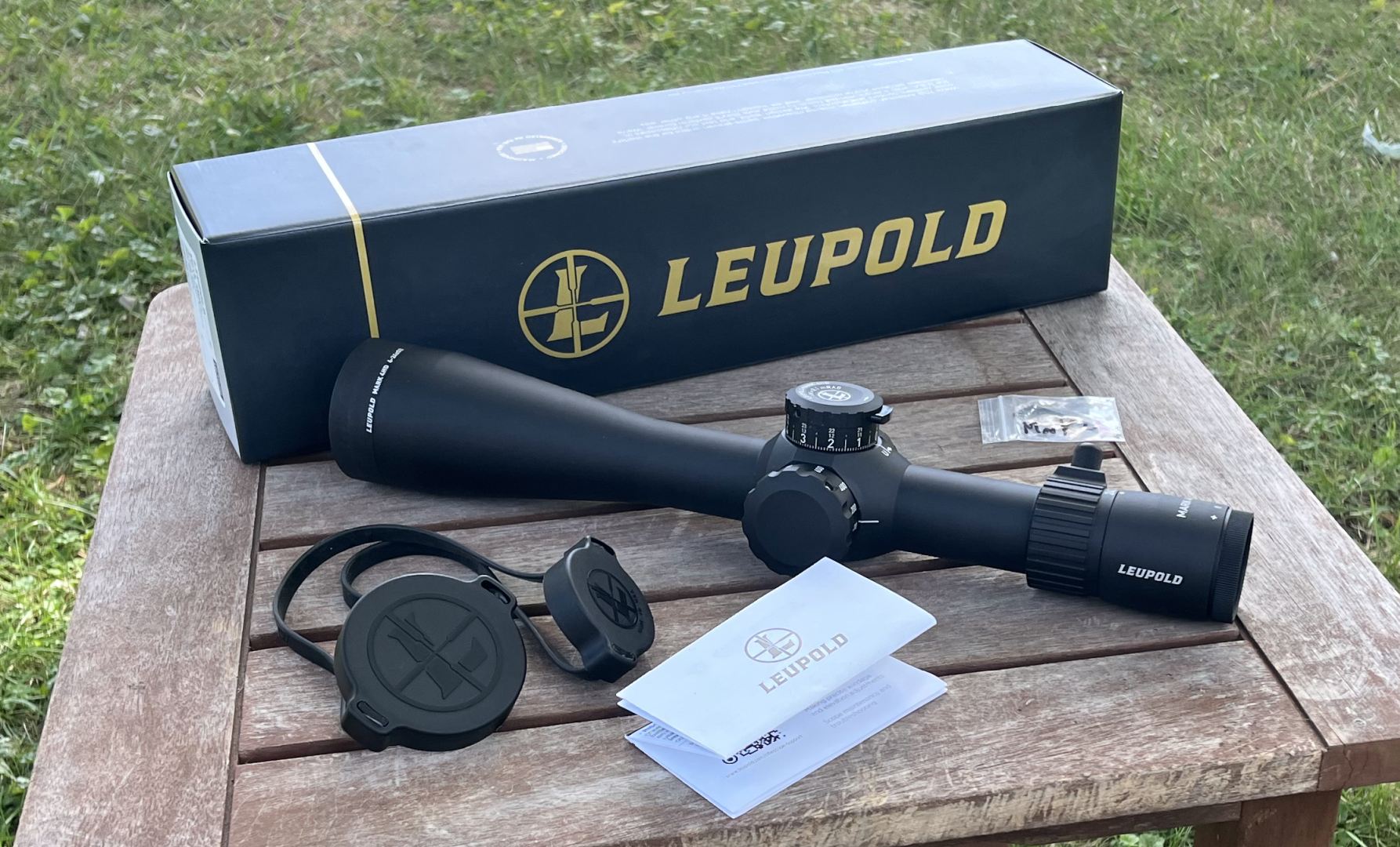
As such, when the Mark 4 line launched in 2024 with similar features and crossover appeal, I was quite interested to get my hands on one. Who doesn’t want an option with all that juicy crossover appeal at a different price point? I talked about it enough in the lead up to the review that a shooting buddy of mine ended up buying one before I even finished the review, resulting in me having both the 4.5-18x52mm review sample provided at no cost for this review from Leupold and his 6-24x52mm scope purchased though the first responders program to examine. Let’s see what kind of optical performance we get at the Mark4 price point and what feature changes have been made between the Mark4 and Mark5 lines.
Look and Feel:
Leupold clearly takes notes. The Mark5 HD is a wildly successful optic, but it has a few features that people found annoying and one they found limiting. All these have been changed for the Mark4 HD line. For instance, the Mark4 HD elevation knob is 10 mils per turn instead of 10.5, meaning the numbers on each turn line up in a manner that is far more intuitive and familiar than on the Mark5. Similarly, the windage knob now has the zero marking in the conventional centered place instead of offset ~45 degrees. I liked that offset idea on the Mark5, but the angle on the marking made it very hard to make out exactly which click was aligning with the marking. I will also mention here that the windage now has a knob similarly styled to the elevation and with a similar lock at zero instead of the capped low profile one on the Mark5 that, once capped, is roughly the same size anyway. Gone on the Mark4 is the strange 35mm Mark5 tube size. The Mark4 HD is the much more common 34mm for a wider variety of ring options and a much better chance you already have a spare set. Lastly, and perhaps most importantly, the Mark4 HD will focus as close as 25yds instead of 50yds, making it a far better choice for rimfire use. I remember a time when Leupold was not well attuned to changing market demands and feedback from its customers. We are clearly in a whole different era now. These features are exactly what the people asked for.
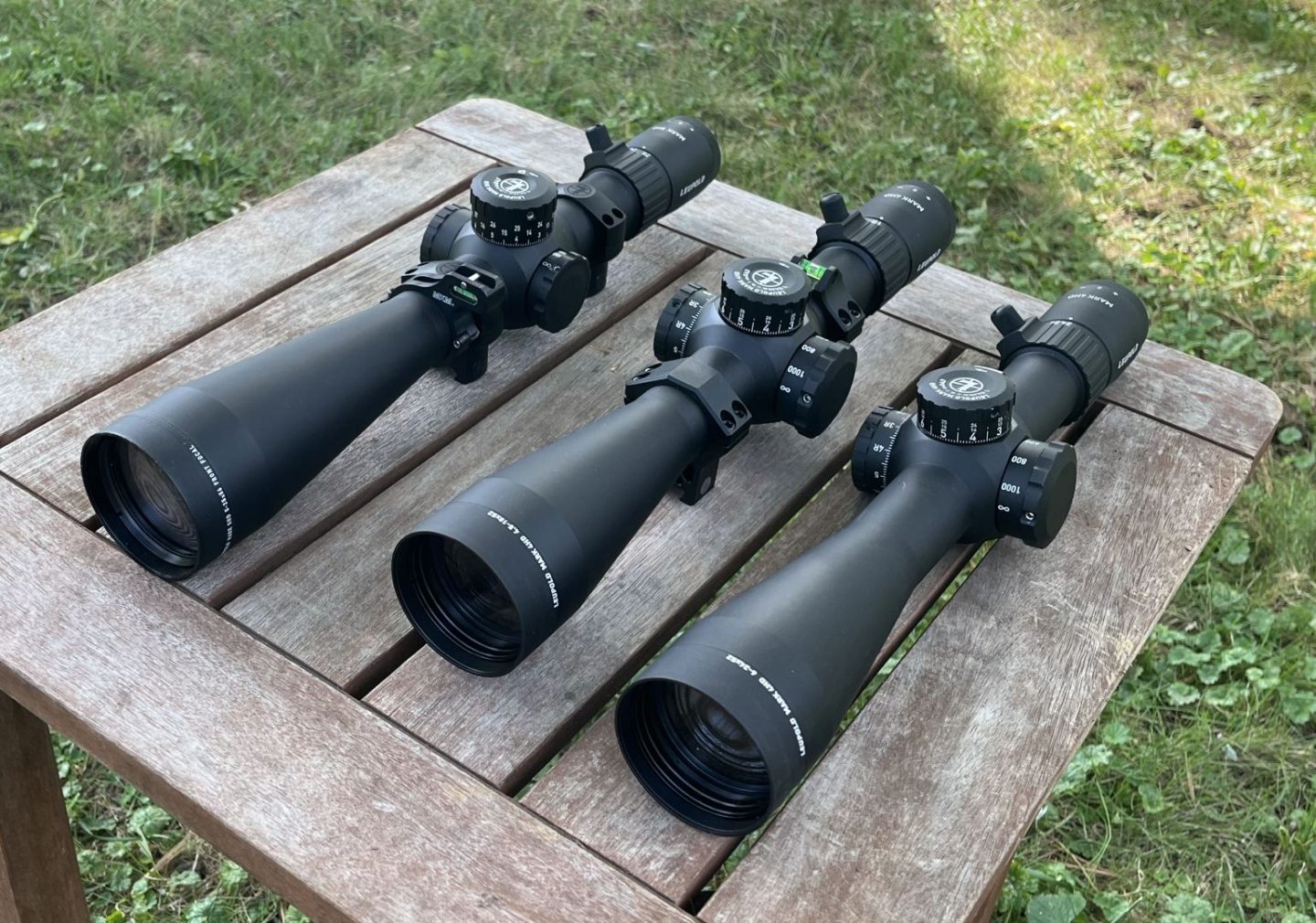
As for the form factor of the specific two Mark4 HD models we will be looking at, the 4.5-18×52 and 6-24×52, they are almost identical. They are both 27.5oz, 14.6” long with have 52mm objectives. It’s pretty easy to mix them up – I hope I gave my buddy back the right one 😉 The Mark5 HD line was very different, with the 3.6-18×44 being just 26oz and 12.1” long, whereas the 5-25×56 is 30oz and 15.7” long. The Mark 5 line very clearly had a precision rifle size higher power option that was light enough to use as a hunting scope and a hunting sized lower power option with all the features necessary to compete with provided you didn’t want massive magnification. The Mark 4 line could have done with a bit more of this differentiation. Incidentally, the models on either side of these two in the Mark4 HD line do get bigger or smaller, it’s only these two that are the same size and weight.
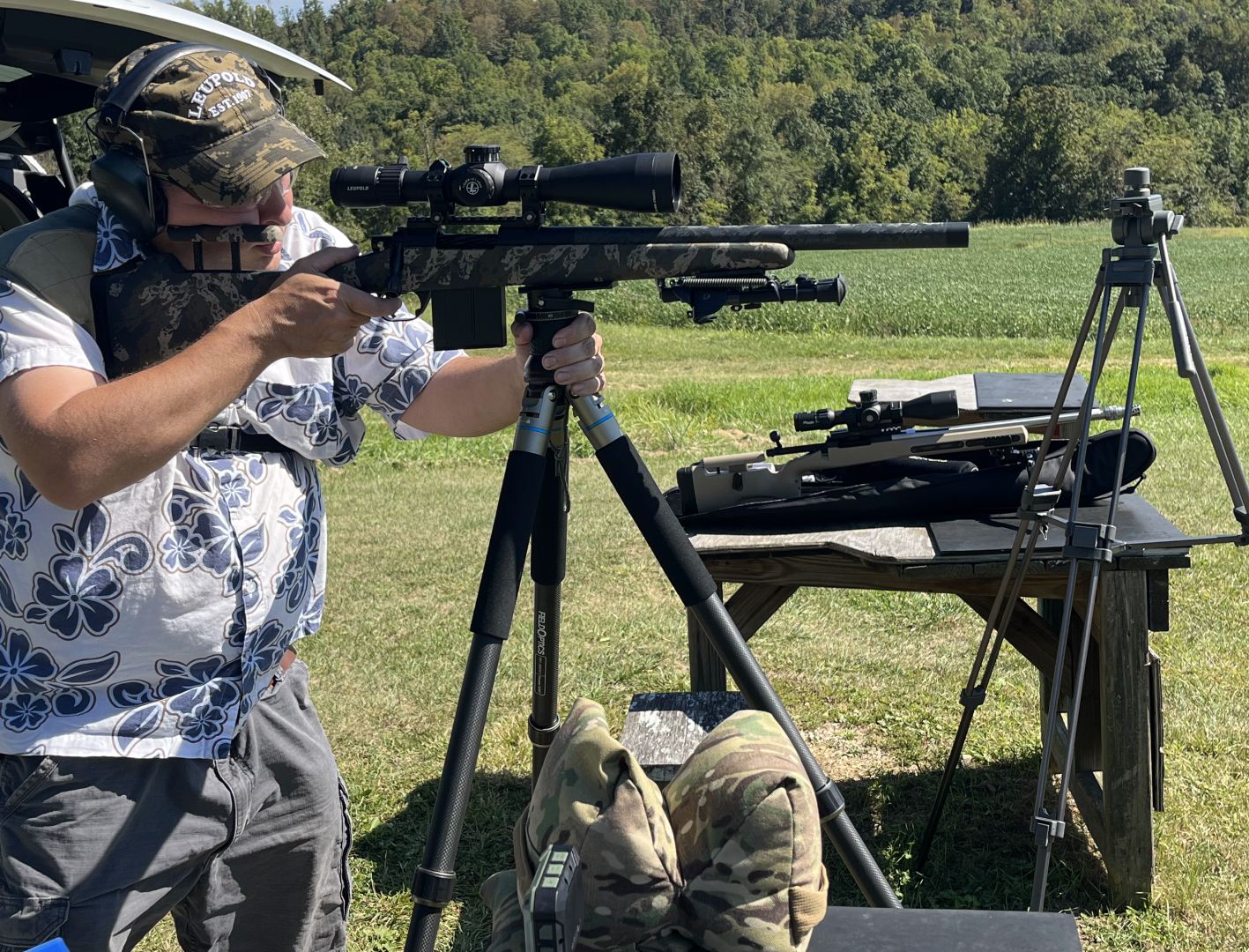
There is very little change in styling or features between the Mark5 HD and Mark4 HD. Both feature the now common fast focus, non-locking, euro style diopter, and both are stiff enough to prevent accidental adjustment. Both scopes also have a power ring with a removable throw lever stud. This stud is included with both the Mark5 and Mark4 scopes, though the Mark4 does not include the decorative plug that you can optionally put in place if you’re not using the stud. The side focus parallax on the Mark4 is slightly larger than on the Mark5 HD, and adding illumination, though still costly on the Mark4 HD scopes, is significantly cheaper than it was on the Mark5s at $200 instead of $500. On Mark4 HD models, this $200 illumination also includes an electronic scope level sensor that blinks the illumination when the scope is not level, a feature not present on the Mark5 HD despite the higher cost for illumination. Having used scopes previously that featured a built-in electronic level, I can attest to the value of this feature. Not having to divert your attention from the sight picture or shift your eye from behind the scope to check the level is quite helpful. Also of note is that illumination appears to only be offered in the Mark4 HD line up to the 4.5-18x magnification. There do not appear to be 6-24x or 8-32x illuminated models.
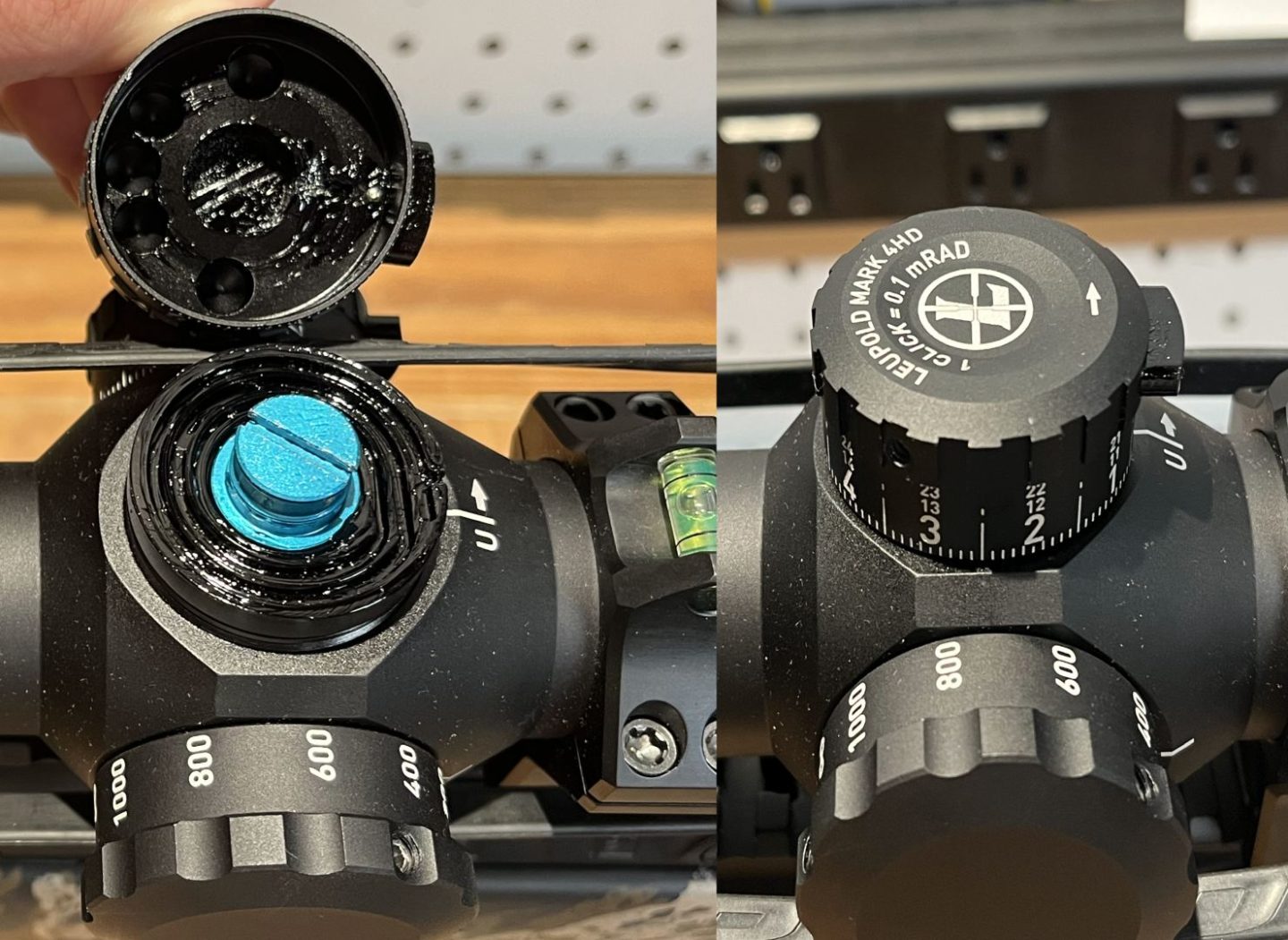
As mentioned previously, the elevation knob on the Mark4 HD is 10 mil per turn instead of 10.5 so that base 10 numbers now align on each rotation, as I think everyone prefers. Otherwise, the elevation knob is pretty similar with a non-translating pin style zero stop system and a lock that only engages at zero. As with the Mark5, the knob has three turns, resulting in 28.7 mils of functional travel (the Mark5 had 30.0 owing to its 10.5mils per turn) and the total internal elevation of the 4.5-18x52mm version of the Mark4 is listed as 36 mils (I measured more), giving you a substantial bit of leeway in what angle scope base you can use while still being able to get the full 28.7 mils of functional travel the knob allows. The elevation knob on the Mark4 HD is also very slightly shorter and smaller in diameter than the Mark5 and does not have the redundant third turn pop up. Instead, the turret-locking button is the only turn indicator. It is extended on the first turn, flush on the second, and recessed on the third. The Mark4 has a fixed .5 mils of elevation travel below zero and, as on Mark5, uses two setscrews to set the zero. The feel of the elevation knob is almost identical between these models, though the click sound of the Mark4 is quieter and lower in pitch. The click force relative to the between click force is well calibrated to allow the user to discern each individual click and not skip over any, though some will say the feel is on the squishy side and not super tactile. In my experience, this is the better side to be on, as super hard staccato clicks often cause skip over and loss of count. The windage knob look and feel is the same as the elevation. It also includes a lock at zero and offers 5 mils of travel each way and a lock at zero. This stop is set in the knob and not internally so you will not lose windage travel if your zero is some distance from optical zero.
Reticle:
The Mark4 HD 4.5-18×52 is available in significantly fewer reticles than I am used to seeing from the Leupold SKU factory. The illuminated version comes in only the PR1-MOA and PR1-Mil, and the unlit version comes in only the PR2-MOA and PR2-Mil. SKU management matters more than people think for cost control and clearly Leupold is focused on aggressively pricing the Mark 4HD. I suspect the PR1 series was chosen for the illuminated version because they have a little thicker stadia and will show the illumination better. Using the PR2 for the unlit model provides more variety for the consumer with the same number of SKUs.
The PR1 series are non-tree style reticles with a floating dot center, stadia in all four quadrants, and very simple markings. The MOA version has markings every 1 MOA and labels every 10 MOA and the Mil version has markings every .2 mils with labels every 5 mils.
The PR2 series are tree reticles with a mostly open 12 o’clock and more complex graduations. For the PR2-MOA, on the horizontal stadia, the 1 MOA graduations now have an alternation up, down, and both ways marking scheme with labels every 4 mils on the main stadia and no labels at all in the Christmas tree section. On the vertical stadia, MOA divisions are alternately denoted by hashes, gaps in the stadia, and then full Christmas tree branches at every 4 MOA. So, the alternation goes, branch, gap, hash, gap, branch. The divisions are basically all 1 MOA divisions, but I’ll admit the vast number of different styles of marking seems a bit much and is pretty likely to confuse the shooter.
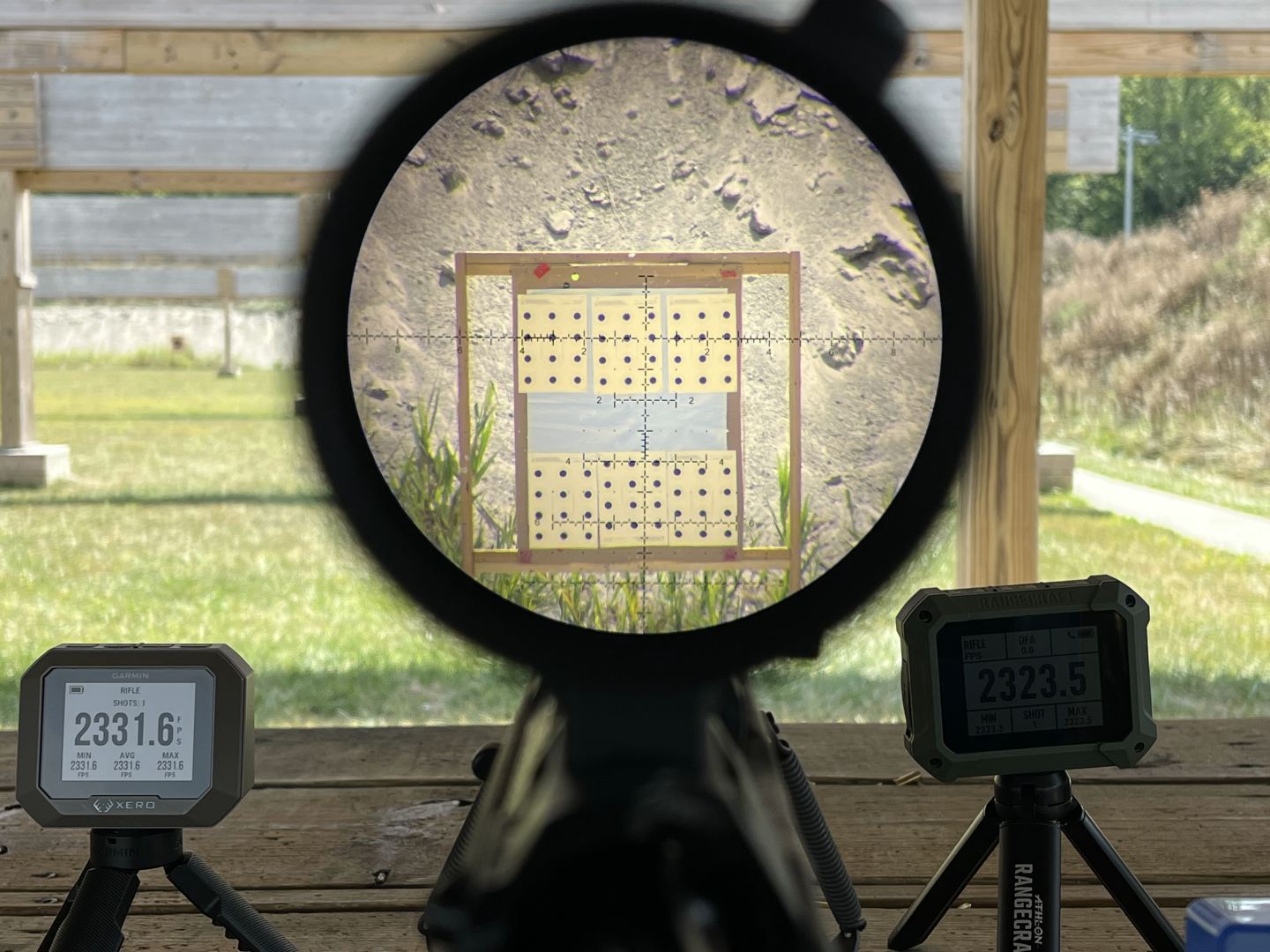
For my review sample, I went with the PR2-MIL. This was the same reticle I looked at when I reviewed the Mark 5HD in 2021, so this text will sound very familiar to those of you who read that review. The PR2-Mil design is the result of a collaboration between a number of Leupold’s top competitive shooters, including John Pynch, Dan Bertocchini, and Doug Koenig. I think this is a great concept that more scope makers should employ when designing their competition focused reticles. Often, scope makers simply aim to copy the basic look of others’ successful reticles and end up messing it up because the guy doing the translation doesn’t really understand which elements of the reticle to be emulated were the most important and how each element interacts with the others to form a cohesive whole. The result is often a reticle which has relatively unimportant aspects straight up copied with important stuff haphazardly changed for the worse. Having people who are successful examples of your intended audience actually design the reticle is a good way to make sure it works, at the very least, and may even get you some design innovation as a bonus. You should keep this reticle’s pedigree in mind when reading my opinions, as these guys are, frankly, a lot better and more knowledgeable shooters than I am.
On the most basic level, the PR2-MIL reticle has many of the most common elements found in long range reticles today. It is a mil Christmas tree reticle with floating dot center and what I would call medium line thickness. Like many of the newest designs, the PR2 next removes all but 2mils of the 12 o’clock post. It also slims down the lines every other mil on the Christmas tree portion to just very small dots every half mil. Both on the windage and elevation markings, the PR2 goes out a little further than most scopes, with 10 mils fully marked each way in windage and 32 mils total in elevation (though the Christmas tree stops at 10). The PR2 finally departs some from the most common reticle patterns in being graduated in .25 mil increments for most of the reticle and having a tiny gap at the intersection of those markings with the main crosshair.
The parts I like best about the PR2’s design are the open 12 o’clock and fully graduated 6 o’clock. I’m a big fan of open 12 o’clock reticles as I think you get more out of having some unobstructed space than you do having another section you can use for measurements, since you never realistically hold under a significant distance. The 12 o’clock area is a particularly good place to have that open space as you need all the help you can get when it comes to trying to observe trace. I ended up liking the fully graduated 6 o’clock for two reasons. The first of these was a bit unexpected: the graduations made for a lack of a thick post at 6 o’clock and I found this accentuated the thick posts at 3 and 9, sort of making a horizon effect at lower powers. I’m not sure if this actually helped me to be more level in practice since it all disappeared when I dialed to the power I shoot most targets at, but I liked the effect at low powers. And if you start observing your target at lower power when locating it in the scope, you may find that this horizon helps with keeping things level even at higher power as you may retain a feel for the lay of the land around the target. Conceptually, I also like the idea of having graduations for more potential drop. In practice, I expect that really only the ELR guys might ever get to the point of exhausting their elevation knob and still needing a ton of drop compensation, but I’m drawn to the ‘why not’ of it even though in practice I did not exhaust the substantial elevation travel of the Mark 5HD at any point in testing.
Without question, the trickiest part of the PR2-MIL reticle is the .25mil graduation scheme. Reviewing as many scopes as I do, I use many different reticles with varying graduation schemes on a pretty regular basis. For whatever reason, I have found these .25mils to be more difficult than most other mil schemes to adjust to. I thought it would be quite similar to shooting one of the various .5mil graduated scopes that I have used, but it didn’t seem that way in practice. Be prepared for some adjustment. I remember John mentioning the adjustment period on his podcast and, sure enough, it was more than I expected. In the end, he said he has grown to prefer having less graduations with the .25 mil divisions. For my part, I have come to realize that I basically think in tenths of a mil and slightly more thought seems to be required to mesh this with .25 mil graduations than with .2mil or .5mil.
Comparative Optical Evaluation:
Since I had more than one riflescope from the Mark4 HD lineup available to me during this review, and that is pretty uncommon, I will start the optical evaluation by talking about that. I believe this is only the third time I have had the advantage of multiple samples while doing a review. The two Mark4 HD examples I had at my disposal during this review were different magnification ranges, 6-24x52mm and 4.5-18x52mm. Perhaps due to this or perhaps due to simple sample-to-sample variation, I did notice a very slight edge to the 6-24x52mm in resolution at 18x (no difference at 10x). This edge was very slight, slight enough that I didn’t even notice it in all conditions. Far more marked than the exceptionally slight difference I sometimes noted in resolution between the two different magnification ranges of Mark4 HD scopes was their difference in field of view (FoV). For those interested, I have created a condensed statistic for this. I call it the FoV multiplier (FoVX). (See, I can do acronyms, too!) The FoVX is calculated ((max power * FoV @ max mag in ft) + (min power * FoV @ min mag in ft)) / 2. This gives a number that basically averages how good the FoV of a scope is at both ends of its power range. For this statistic, the Mark4 HD 4.5-18×52 scores a 98.78 and the 6-24×52 tallies 108.3. Neither of these is great, but the 6-24×52 is about average at the price point whereas the FoV 4.5-18×52 is significantly below. The Mark 5HD line also has less than stellar FoV performance with the 5-25×56 at 103.5. FoV is clearly not one of the optical variables most optimized for by Leupold in their designs. On the bright side, all of these Leupold designs perform remarkably well at handling stray light, an attribute that unsurprisingly often correlates with a smaller FoV. All of the six or so Leupold scopes I have reviewed over the years have excelled at avoiding blooming or washout in difficult stray light conditions. Clearly this has always been one of the top optical performance characteristics optimized for in Leupold’s designs. Stray light handling is a very important characteristic, as a significant stray light problem easily renders moot any other optical characteristics a scope might have, since you would not be able to make out the target at all in challenging conditions: all you would see is a whiteout. In my experience, these conditions, and scopes that suffer from them, are more common than you might think. Outside of these two aspects of optical performance, resolution and field of view, optical performance was so close that I will treat these two Mark 4HD models as if they were one scope, though I did the optical comparisons with both.
In addition to comparing the two Mark4 HD models at my disposal to each other, I chose to run them against their more expensive sibling, the Mark 5HD 5-25x56mm ($2.2k). I also chose two other scopes from the ~$2k scope lineup, the Sightron S6 5-30x56mm ($1.9k) and the Sig Tango6 5-30×56 ($1.8k). Lastly, I added one of the better performing scopes from the sub ~$1k lineup, the Athlon Ares BTR 4.5-27x50mm (~$769 for the model that replaced this discontinued one). As the prices of these test scopes vary widely, I have chosen to include their street retail prices at the time of this writing to inform the reader. The Mark4 HD sits in a very unpopulated section of the cost spectrum with the 4.5-18×52 at $1.4k and 6-24×52 at $1.5k. Models of scopes in the $500 – $1k range are common, as are scopes from $1.7k – $2.5k range. For whatever reason, there are surprisingly few options from $1k to $1.7k. I chose the broad spectrum of differently priced scopes used in this optical comparison to give us a wide field of performance against which to measure the optical performance of the Mark 4 relative to its cost instead of the direct head-to-head comparisons often made when I do a roundup of scopes at near cost parity with each other.
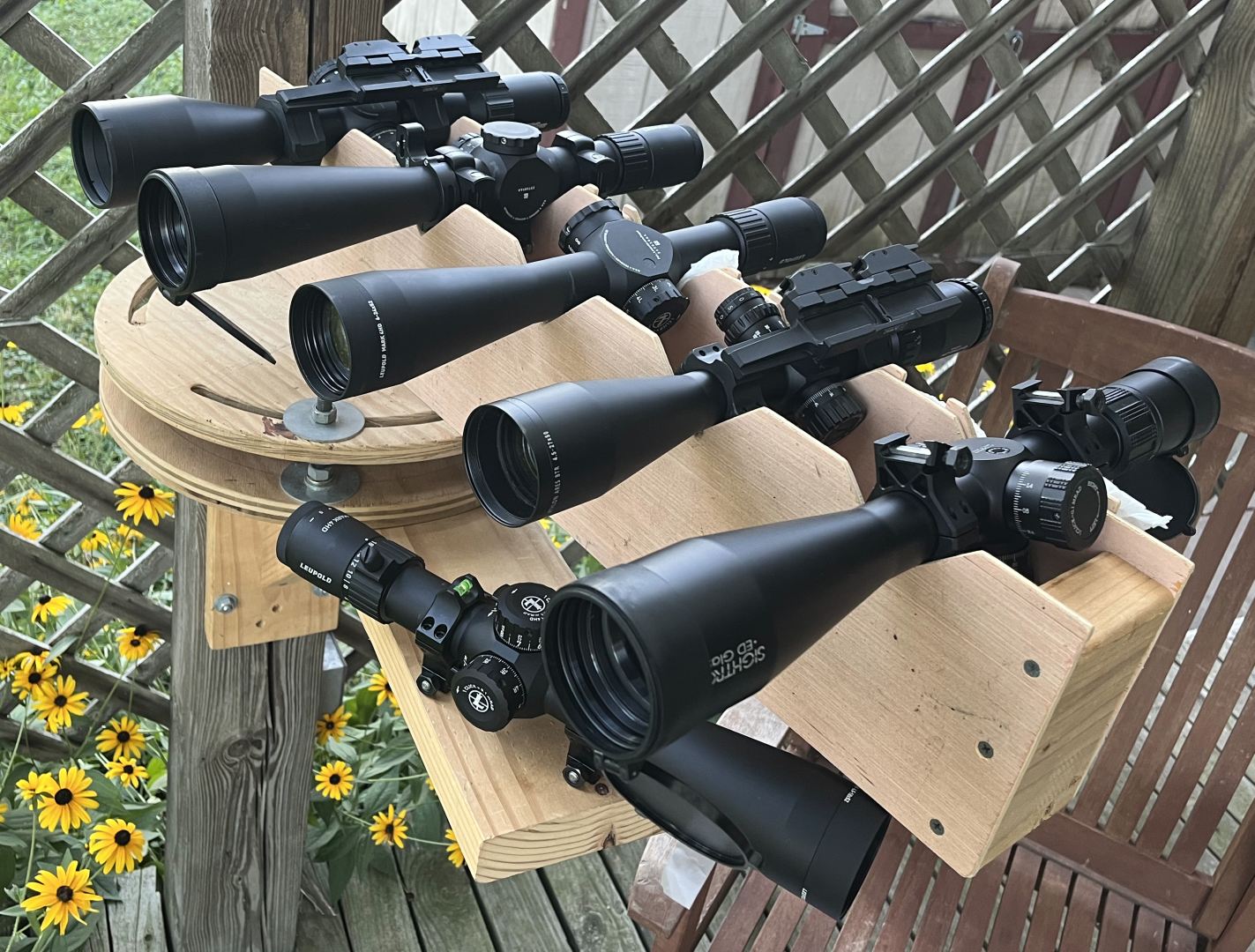
As per usual, I will start off the optical comparisons with resolution. This I examined at 10x, 18x, and 24x (for the 24x max model). This resolution comparison was very close and very interesting between the Mark 4HD and the ~$2k scopes. The scopes had a tendency to trade places at differing magnifications, with the Mark 5HD dominating the 24x and 18x but the Sig, a poor performer at 24x, actually being the best at 10x. I found this trading back and forth of the resolution crown both very interesting and also indicative of how close the resolving performance was between a number of these optics. The Mark 4HD performed its strongest relative to the other scopes in the lineup at 10x, but still bested one of the ~$2k scopes at each of the higher resolutions. It’s a strong performance for the price. Leupold clearly optimized for resolution in the design.
Another area of excellent performance was depth of field. This was true of the Mark 5HD as well. The Mark 4HD came in right behind its big brother for second place in the lineup for depth of field performance. Be aware that, just as with the Mark 5HD, the Mark 4 appears quite sensitive to off-center eye position when you are taking advantage of that depth of field and have your parallax set to the wrong distance. You can easily throw a shot a few tenths with poor head position while still having a pretty clear view of the target between both the excellent depth of field and a comfortable eye-box.
Another area of optical performance in which the Mark4 excelled was performance outside of the center of the adjustment range. Very little degradation was noted as the adjustments were moved far from center. I’ll mention low light performance here as well. The Mark4 landed where you would expect, a little behind the 56mm scopes and a little ahead of the 50mm Athlon. Coatings are good nowadays, guys! There just isn’t much magic when it comes to low light performance and, quite frankly, the little more light you get from bigger objectives doesn’t add up to much real world utility either.
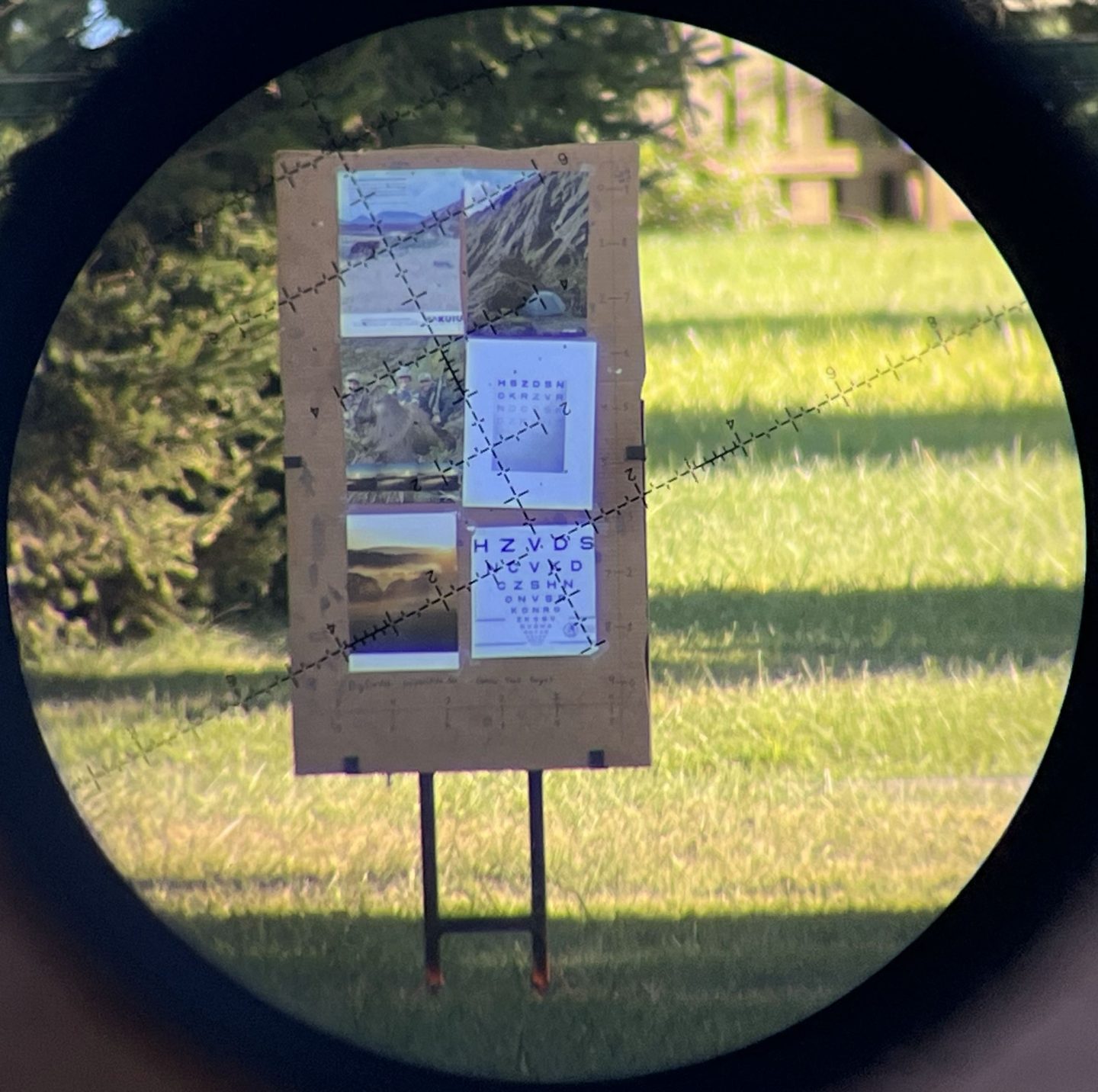
Now let’s talk about the areas in which the Mark 4HD is less competitive with the ~$2k class of scopes. We should clearly start with the 4x erector ratio here. All of the optical comparison scopes have a 5x or 6x erector ratio. A four times multiplier between the lowest and highest magnification is well below average these days. That being said, except on LPVOs, a high erector ratio does not offer a lot of real world benefit and often results in some pretty poor optical performance. A few years ago, 8x and 9x erector ratio models at absurd prices were all the rage in alpha scopes. Those models quickly got a reputation for poor optical performance. Many (probably most of them) are no longer even manufactured, and the best selling alpha scopes have a 5x ratio. My opinion is that the consumers in the high-end market have properly judged erector ratio in non LVPOs as being of low importance compared to optical performance. It is still worth mentioning the 4x multiplier though.
Chromatic aberration is a far more important aspect of optical performance, and the Mark 4HD displays more of it than both its big brother, Mark 5HD, and the Sightron S6 for instance. It was even a little behind the much lower cost Athlon though a bit better than the Sig for which chromatic aberration is also a struggle. Also a bit of a struggle for the Mark 4HD are both contrast and color rendition. Colors look notably less vibrant though the Mark 4HD scopes than through the Mark 5 or other ~$2k scopes.
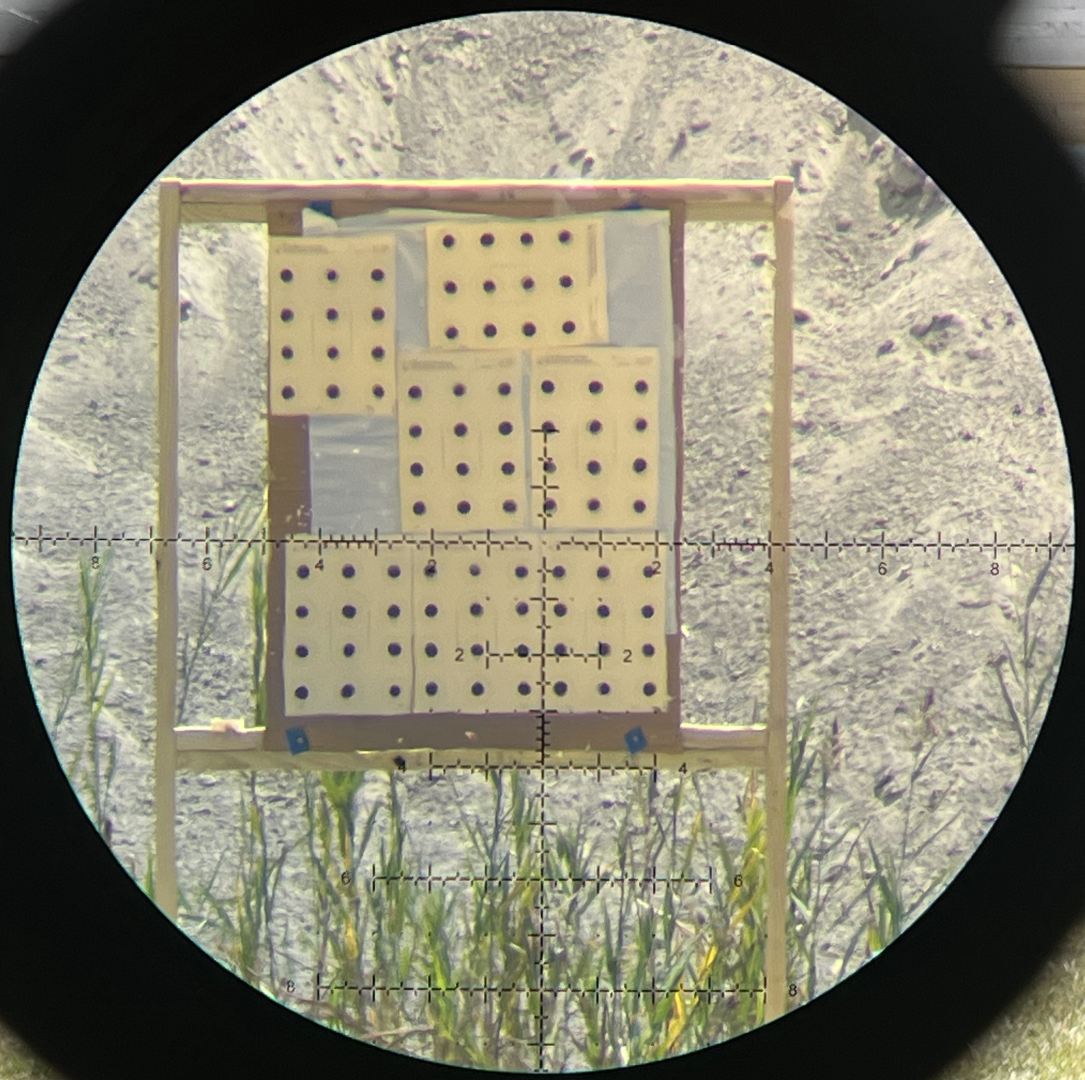
On the whole, I would judge the overall optical performance of the two Mark 4HD scopes I looked at as commensurate with what I would expect at the price point. On balance they were the small amount behind the $2k scopes and large amount ahead of the sub $1k scope. Optical performance of the Mark 4HD is par for the price in my judgment. The higher cost Mark 5HD is a significantly stronger performer optically, as it should be given the price. Lastly, I’ll speculate here that the same designer or design team did both the Mark 5HD and Mark 4HD designs, as it looks to me very much like the same optimization choices have been made – and, why not, those choices have been very well received.
Mechanical Testing:
Most scopes have some deviation from perfect adjustment magnitude, though they are doing far better now than just a few years ago. This adjustment magnitude error will vary from example to example within the same model of scope. This is because it is not a product of design errors, but rather variances introduced within manufacturing and assembly. So, the performance of my test samples is a piece of information with only limited value due to representing only one, or in this case two, examples. Typically we measure adjustment magnitude error as a percentage such that a scope whose reticle moves 10.1 mils when adjusted 10.0 mils tracks at 101% and one whose reticle moves 9.9 mils when 10.0 is dialed tracks at 99%. Having both reviewed and tested quite a number of scopes from a large selection of manufacturers, I can tell you that the average deviation in adjustment magnitude from ideal is almost exactly 1% if the two past scopes that failed tracking (and therefore can’t be linearly assessed) are not included. Reticle size deviation is close to that of adjustments at .9%. The average reticle cant measured is .07 mils in 10 mils traveled or .4 degrees.
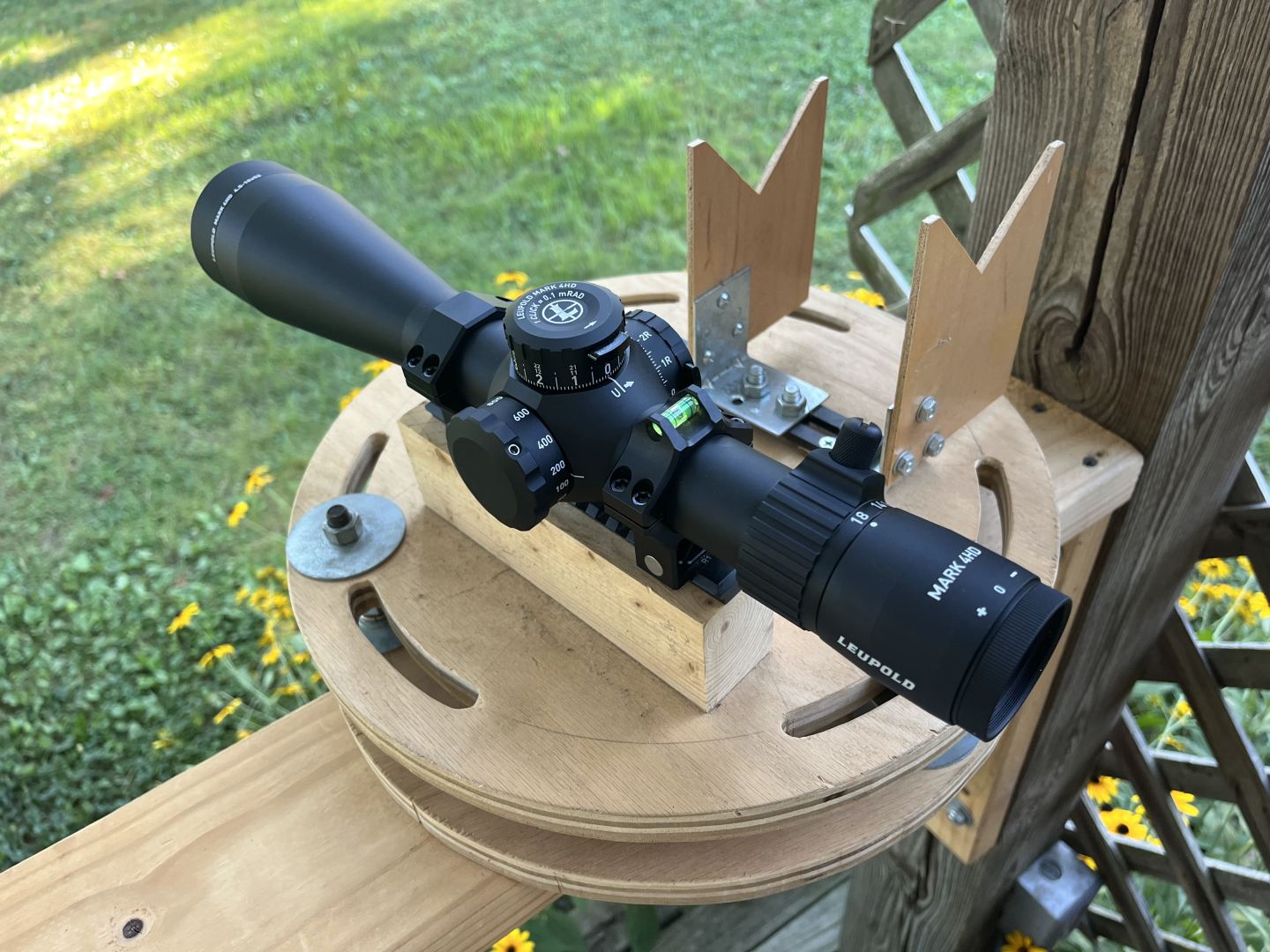
Let’s start off mechanical testing with the Leupold Mark 4HD 4.5-18x52test scope. From center, ittracked up 10.0 mils on the adjustments but 10.2 mils on target for a 2% adjustment deviation and a .98 sight scale factor in applied ballistics. Full up was 19.5 mils from center of which the last .2 mils were ghost clicks with no optical movement. Down from center measured 22.8 mils with no ghost clicks. Looks like I was a mil and change from optical center at the start. In any case, it adds up to a total elevation travel of 42.3 mils. That is a good deal more than the 36 mil spec, though in practice, you can only utilize a maximum of 28.7 mils with the three-turn elevation knob. There was no measurable spline slop when switching adjustment direction. On the windage adjustment, you get 5 mils each direction before hitting a stop. This stop is in the adjustment knob and not in the scope body though, so when you set the zero on the knob to your rifle you will not loose adjustment range in either direction. There was no tubing out behavior with the Mark 4 at the adjustment extremes (this is when you can get elevation change when adjusting windage if the elevation knob is very close to maxed out because the erector tube is impacting the inside of the main tube body). There was also no change in point of aim with adjustment to diopter or power ring. I could not really judge parallax because it is very sensitive to head position when not focused to the correct distance so, in practice, it will look like it’s moving though I don’t think it is. The reticle size on the Mark 4HD 4.5-18×52 was slightly large. 10.0 mils on the reticle corresponded to 9.8 on the target. The reticle was canted .05 mils in 10 mils of travel, or about a quarter degree clockwise.
Next let’s talk about the testing on my buddy’s Leupold Mark 4HD 6-24×52. From center, ittracked up 10.0 mils on the adjustments but 10.2 mils on target for a 2% adjustment deviation and a .98 sight scale factor in applied ballistics. Full up was 20.7 mils from center with no ghost clicks. Down from center measured 20.9 mils with no ghost clicks. This gives a total elevation travel of 41.6mils. This is again more than the 36 mil spec also listed for this model and again, when dialing for drop, you can utilize a maximum of 28.7 mils with the three-turn elevation knob. There was no measurable spline slop when changing direction of adjustment. There was no tubing out behavior with the Mark 4 at the adjustment extremes. There was also no change in point of aim with adjustment to diopter or power ring and I still can’t judge the parallax. The reticle size on the Mark 4HD 6-24×52 was slightly large. 10.0 mils on the reticle corresponded to 9.8 on the target. The reticle was canted .3 mils in 10 mils of travel, or about 1.75 degrees counterclockwise.
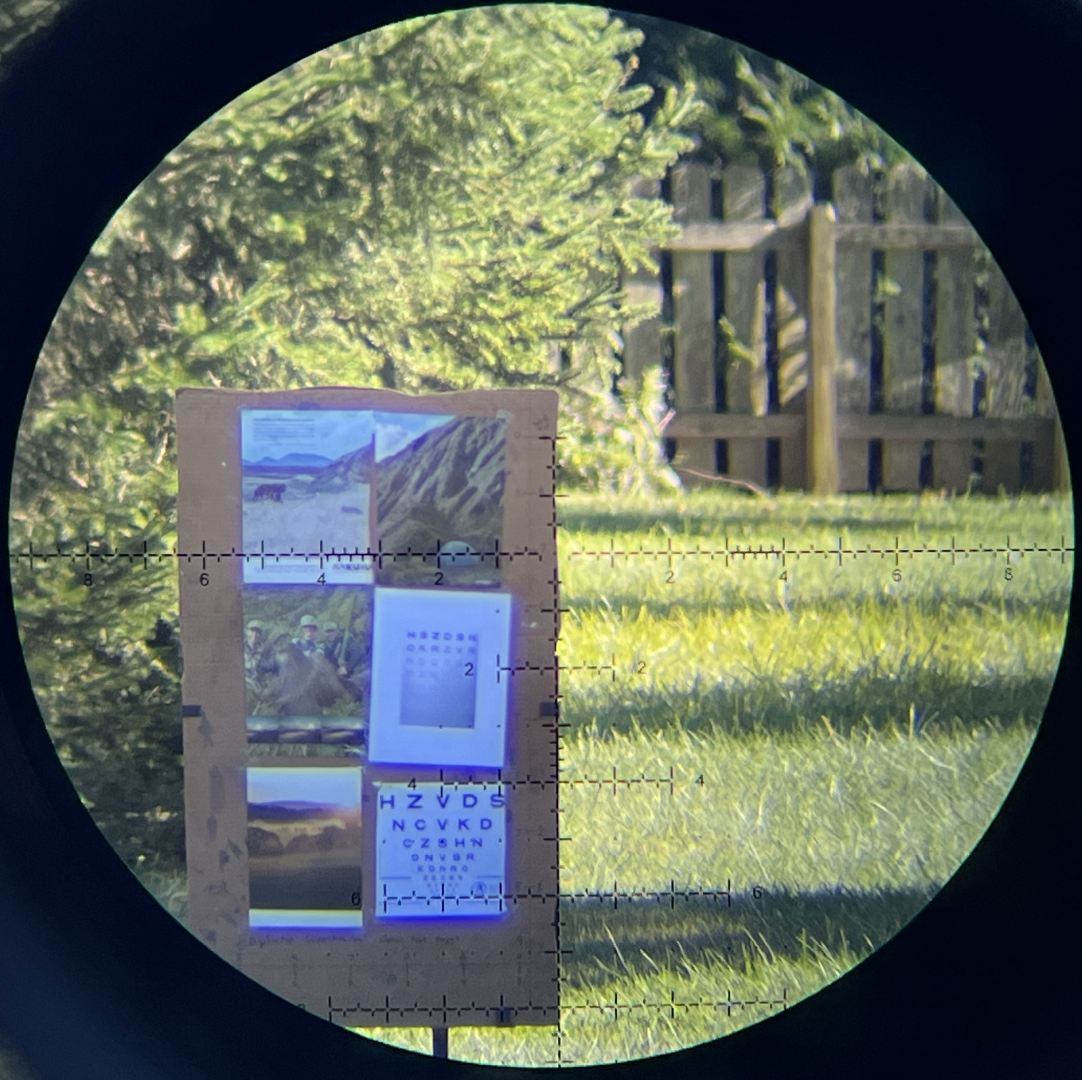
Obviously, a 2% deviation in both reticle size and adjustments for both scopes isn’t great. The average deviation for all scopes I have tested is about 1% for adjustments and a little less for reticle size. On the bright side, on both scopes, the deviation in the adjustments and reticle match such that what you see on the reticle will match what you adjust on the adjustments. I’m not sure how much that matters as follow up shot adjustments tend to be just a few tenths but it is technically true and interesting. Speaking of things that don’t matter a lot, that two percent deviation doesn’t really matter either. When you dope your rifle at distance it’s going to end up being corrected for by some combination of your BC value and your muzzle velocity in your ballistics solver. What is more problematic is the reticle cant in the 6-24x52mm example. Adding .3mils of windage when adjusting 10 mils of drop is more cant than I would like to see and a lot more than I usually see. I could defiantly see this costing missed shots especially with a .22lr where you are often adjusting big elevation numbers without having correspondingly big and uncertain wind calls that might end up being mistakenly blamed.
Summary and Conclusion:
The feature set of the Leupold Mark 4HD 4.5-18×52 is hard to argue with. It shares the feature rich “zerolock” low profile, non-translating, and turn indicating, elevation knob design that made its older brother the Mark 5HD so popular among both hunters and competitive shooters. It even improves this design slightly by making it a little less likely to confuse the shooter on subsequent turns by making all the base 10 numbers align on each turn. This was one of many features improved from the already popular Mark 5HD including a more common 34mm tube size, a closer 25yd minimum focus distance, a “zerolock” style windage, and an internal electronic level in illuminated models. As with the Mark 5HD series, the Mark 4HDs make both excellent hunting optics and excellent precision competition optics. They have all the features of a precision rifle with far lighter weight and smaller stature than is common amongst that class, with the 4.5-18×52 weighing in at 27.5oz and measuring 14.6” long. It’s a light svelte optic and looks perfect on the ultralight 350L deer rifle I mounted it to for most of the testing.

Optically, I found the Mark 4HD to perform right were you would expect a quality optic to perform at that price. I did not feel that it excelled its price point optically in the way that the Mark 5HD did, but rather that it is on par with the optical performance I expect of a quality optic at that price. On balance, it was just a little behind the gang of test scopes at the ~2k price point I compared it to and way ahead of one of the above average ~$1k comparison. It was apparent in testing that the Mark 4HD shares a lot of optical design philosophy with its big brother and this really showed with excellent performance in resolution, stray light handling, and depth of field testing. The Mark 4HD’s weak points were chromatic aberration, field of view, and color rendition. Out in the field, the Mark 4HD was a pleasure to shoot. As always, I particularly appreciated how well Leupold handles stray light. You really can’t wash them out even when a good bit of direct sunlight hits the objective.
Mechanically, the M5C3 adjustments are well calibrated to provide tactical and audible feedback while still also allowing you to count each click and not skip past clicks too easily. However, I would like to see tighter QC standards for measurement magnitude. Both of my test scopes were below average on almost all mechanical testing measurements and the 6-24x52mm scope had a reticle canted by almost .3 mils in 10 mils of travel. That is more than I would like to see making QC and leaving the factory.
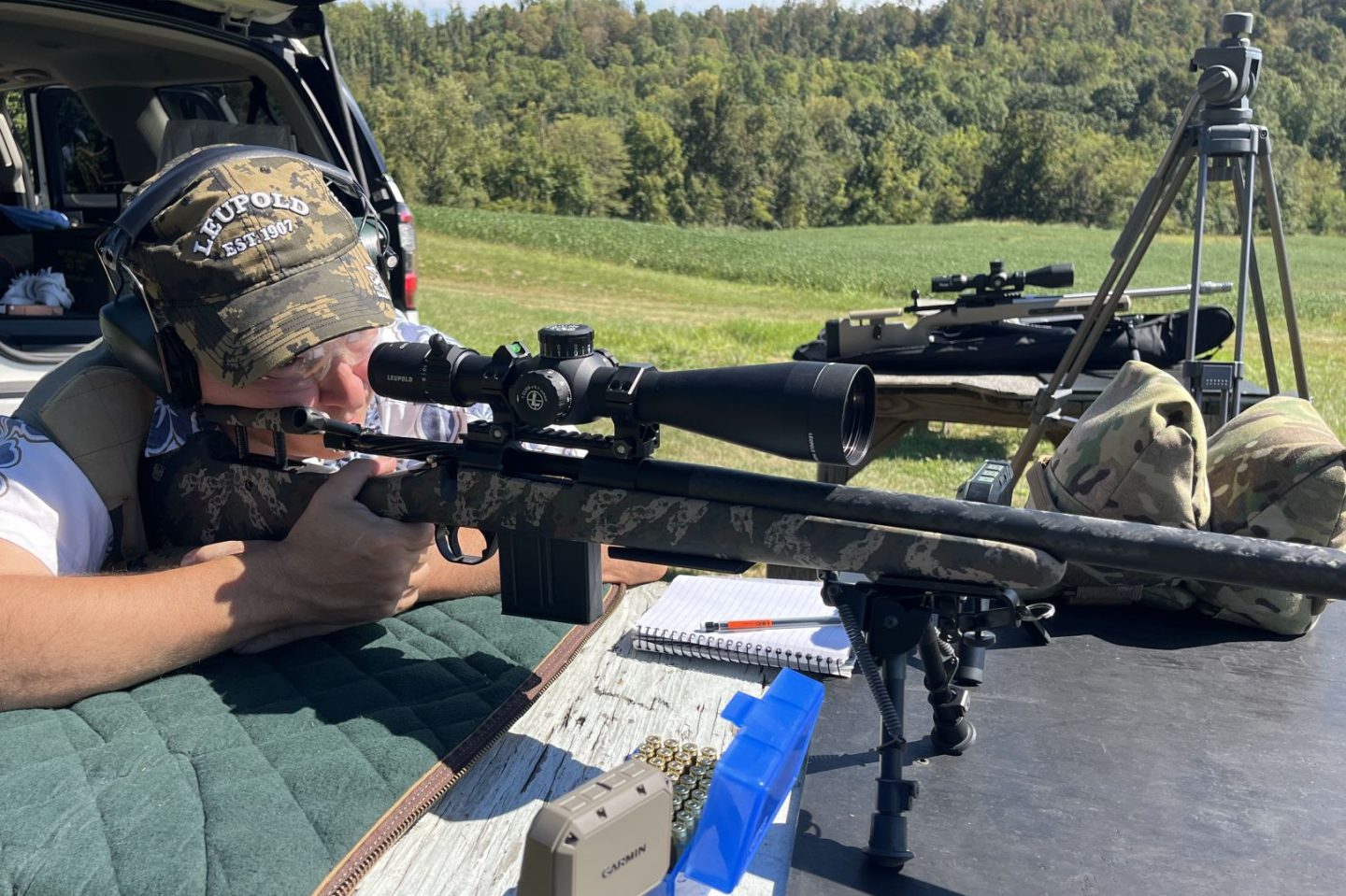
In pretty much every respect the Mark 4HD is very much a more budget friendly Mark 5HD. You are primarily giving up some optical performance, accessories, and the wide variety of SKUs that gave you numerous reticle, color, and illumination options for the lower price and those nice updated features. What you’re still getting is the same killer crossover feature set, American manufacture, and Leupold warranty service that made the Mark 5HD such a hit. I like the Mark 4HD, and I expect to be recommending it to a lot of shooters just as I continue to do with it’s big brother.
Your Pro and Con Breakdown:
Pros:
– Tremendously good feature set, styling, and weight for crossover hunting / precision rifle appeal
– Great updates from the Mark 5HD including 25yd close focus, 34mm main tube, and 10mil / turn turrets
– “ZeroLock” feature rich lightweight, low profile, non-translating, and turn indicating, turret
– Optical performance where it should be for a quality scope at the price
– Made in the USA
– Leupold’s lifetime warranty
Cons:
– The 3 turn turret utilizes only 28.7 mils of the 42.3 mils total travel I measured. A rimfire could actually use another turn
– One of the test scopes had a reticle cant of .3mils in 10mils travel. I would like to see tighter standards
– Comes with only a scope bra, pretty sparse on the included extras.

